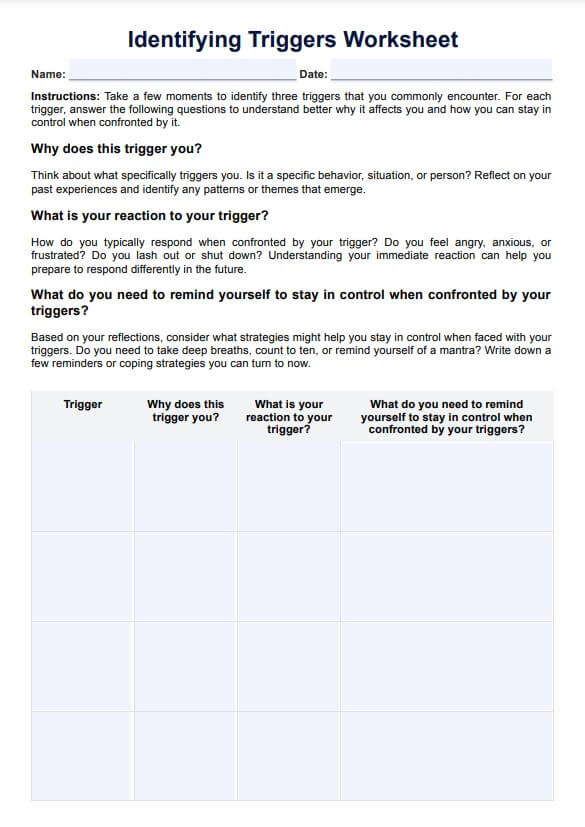Identifiable triggers are specific situations, thoughts, sensations, or memories that provoke strong emotional or physical reactions, such as anxiety, anger, or sadness. These triggers can stem from past experiences, learned associations, or unresolved trauma. Recognizing them allows individuals and mental health professionals to address the underlying causes of emotional distress and develop effective coping strategies.

Identifying Triggers Worksheet
Help clients recognize emotional triggers and develop coping strategies with our free Identifying Triggers Worksheet for stress management.
Identifying Triggers Worksheet Template
Commonly asked questions
The four main types of emotional triggers are external, internal, environmental, and trauma-related. External triggers arise from interactions or events in one’s surroundings, while internal triggers come from thoughts, emotions, or physical sensations. Environmental and trauma-related triggers often involve specific places, sensory cues, or memories that recall past stress or pain, leading to intense emotional reactions.
A stress trigger is any event, situation, or thought that activates the body’s stress response, leading to physical or emotional tension. Common stress triggers include work pressure, relationship conflict, financial concerns, or health issues. Identifying stress triggers helps individuals recognize early signs of stress, such as muscle tension, irritability, or rapid heartbeat, and apply coping techniques to reduce their impact.
EHR and practice management software
Get started for free
*No credit card required
Free
$0/usd
Unlimited clients
Telehealth
1GB of storage
Client portal text
Automated billing and online payments











